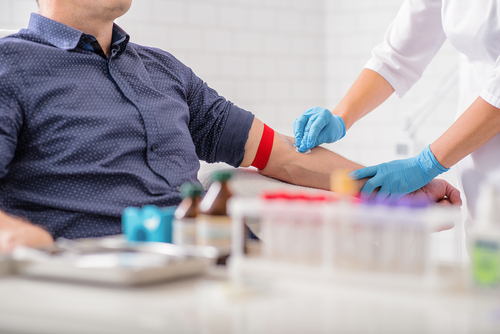
The discovery of blood circulation, arguably one of the greatest achievements in science, dates back to 1628. Shortly after, the first successful human blood transfusion was performed, and so began a cascade of medical discoveries and trials that would lead to the very first human-to-human blood transfusion in 1818—an event that would change the course of medicine and go on to benefit 4.5 million Americans each year.
Blood donations are essential to maintaining a vital supply of blood, helping to improve and save the lives of surgical patients, trauma victims, cancer patients, and individuals suffering from chronic illness.
Donating Blood: Information to Know
What Are Blood Types?
Most people are familiar with the four major blood groups: A, B, AB, and O. A person’s blood type is determined by the genes of their parents.
When it comes to a blood transfusion, blood type is critically important. For the procedure to be safe, the blood type must match or be compatible with that of the recipient. If a blood type isn't compatible, the recipient's body may undergo an immune response, attacking the blood as a foreign substance.
If you have the O-negative blood type, you are considered a ‘universal donor.’ This means that your blood can be transfused to almost anyone with A, B, AB, or O blood types. Alternatively, someone who is AB positive is considered a ‘universal recipient’ and can potentially receive blood cells from anyone.
Who Can Give Blood?
The American Red Cross has been accepting blood donations for decades, setting the standard for safe, healthy procedures. The baseline requirements for those who can donate blood are individuals who are fit and healthy, weigh a certain weight, and are of age to do so.
Additionally, prospective donors are screened for cancer, certain use of medications, and infectious diseases such has HIV and hepatitis. Donated blood is also thoroughly tested for any potential infections after collection.
Why donate?
Each year, millions of people in the United States receive blood transfusions. These individuals may suffer from catastrophic trauma, internal bleeding, or other emergency that requires a blood transfusion as part of their treatment. By donating blood, you are adding to a lifesaving resource that helps save so many lives.
Types of blood donations
The two most common methods of donating blood include whole blood donation and a process called apheresis.
Whole blood donation
Whole blood donation involves placing a needle in a vein, usually in the arm to draw approximately 500 mL (about 1 pint) of blood. This blood is eventually processed at a lab and separated into red blood cells, platelets, and plasma. By separating the components, one unit of donated blood can be used to help several people with various medical needs.
Whole blood donation eligibility varies by state and blood bank, but generally, for whole blood donation, you need to meet the following requirements:
- Weigh at least 110 lbs.
- Be at least 16 years of age (varies by state)
- Be in good health and feel well
Apheresis blood donation
An apheresis blood donation is an effective way to donate specific parts of blood such as platelets, plasma, red cells, and even white cells. This type of blood donation is collected using a special machine that has the ability to separate the blood during the donation process, allowing for a single component to be collected.
For the patient, the process is similar to whole blood donation where a needle is placed in the arm to remove blood. Blood that is not needed is returned to the body through a separate needle in another vein.
Donor assessment for apheresis blood donation is based on gender, height, weight, and hemoglobin count.
Are Blood Donations Safe?
In patients without any major medical issues, blood donation is extremely safe. And currently the Red Cross follow strict processes to avoid the spread of COVID-19.
What Are Blood Donation Side Effects?
Most people have no symptoms after giving blood, but a small number may feel somewhat light-headed. This is entirely normal and expected.
"Blood donation is a fantastic way to save lives and is very safe for the donor," says KarLeung Siu, MD, a Summit Health hematologist. "Common side effects may include light-headedness, dizziness, and arm pain, but these are generally brief. Staying well hydrated before and after donation can minimize the risk of lightheadedness.”
Blood Donations and COVID-19
The American Red Cross has an ongoing need for blood and plasma donations. However, with the COVID-19 pandemic, the need has become even greater. There is also great interest in obtaining convalescent plasma, blood that has antibodies to the virus that causes it. This therapy is currently being studied to determine if it can help people recover from COVID-19 infection.
The Bottom Line
Blood donation is essential to helping patients survive a wide range of medical issues and conditions. Just one pint of blood has the potential to save up to three lives.
If you're interested in donating blood or have questions about doing so, speak to your doctor or one of our trusted hematologists.
